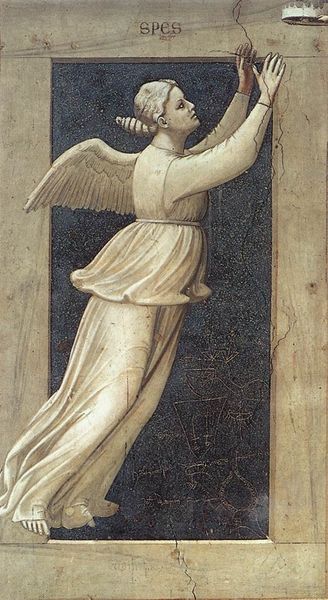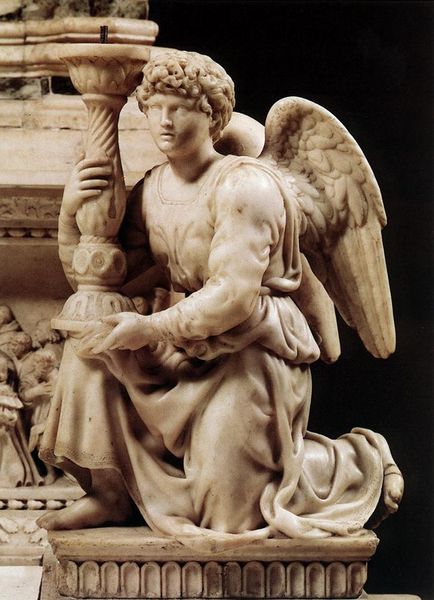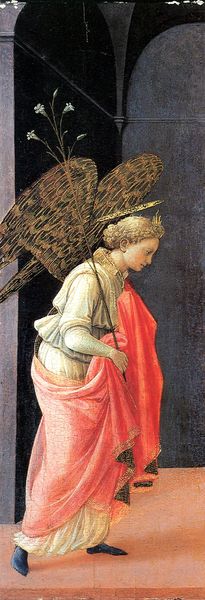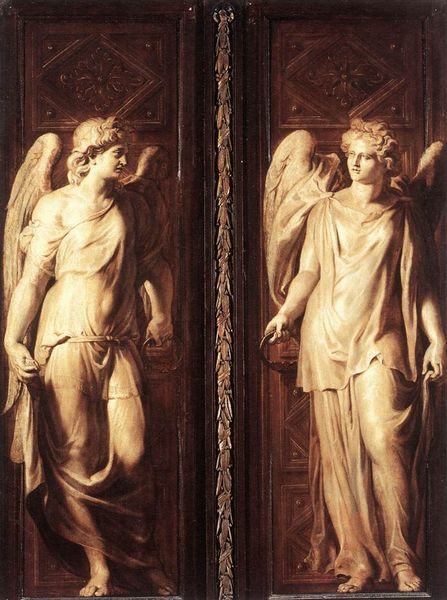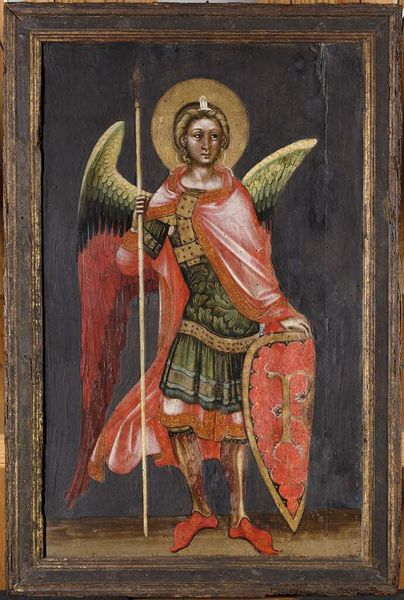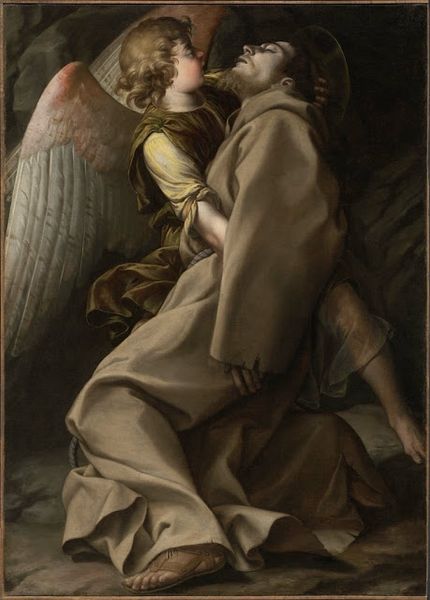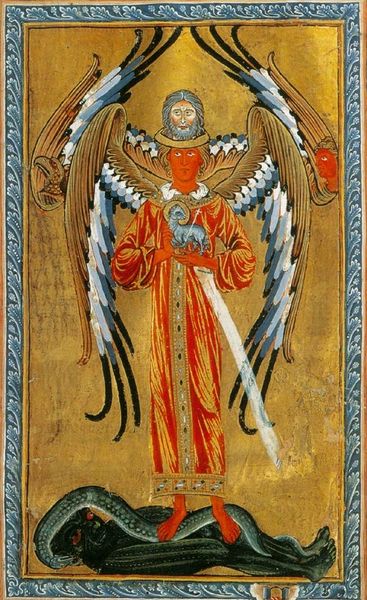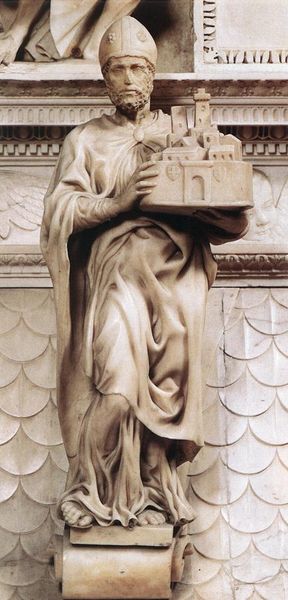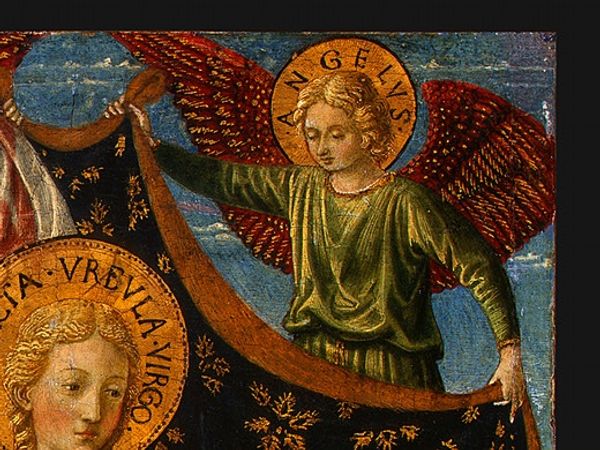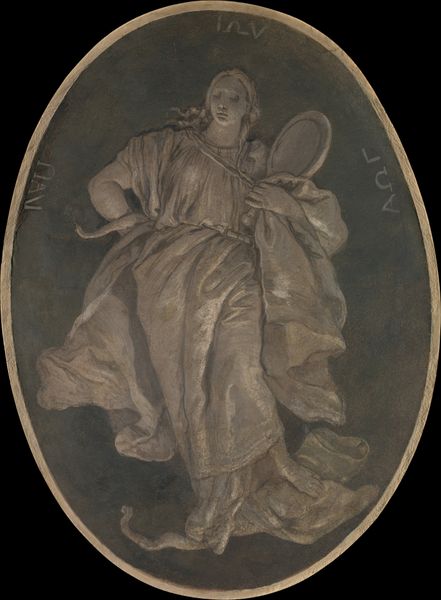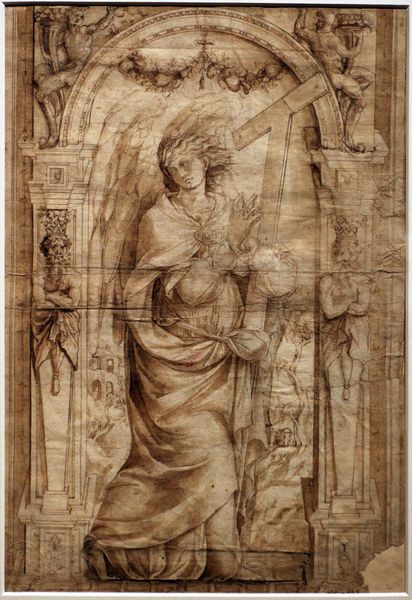
carving, sculpture
#
medieval
#
carving
#
sculpture
#
figuration
#
sculpture
#
northern-renaissance
#
angel
Copyright: Public domain
Jan van Eyck rendered this Annunciation panel in paint, likely sometime in the 1430s, during the early Northern Renaissance. It depicts the angel Gabriel informing Mary that she will be the mother of Jesus. Van Eyck’s mastery, combined with oil paint, allowed him to create lifelike textures and details. The angel’s robes are incredibly realistic. Consider the context: the Catholic Church was a major patron of the arts, commissioning works to inspire devotion and convey religious teachings to a largely illiterate population. The setting may be a contemporary church, subtly reflecting the growing importance of religious institutions in daily life. The use of Latin inscription and the angel’s refined appearance suggest an audience familiar with classical learning and courtly culture. Understanding the patronage, intended audience, and the cultural values of the time helps us interpret the painting's meaning and significance. Art history is not just about aesthetics, but also about understanding the social and institutional contexts that shaped artistic production.
Comments
No comments
Be the first to comment and join the conversation on the ultimate creative platform.

